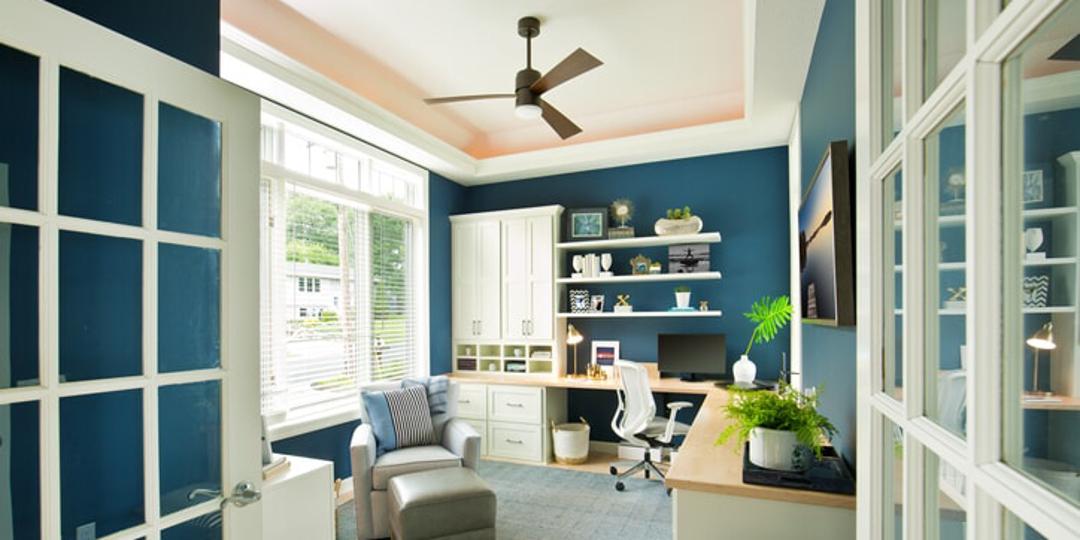While HVAC systems play a significant role in keeping our homes comfortable, they can also consume a considerable amount of energy. To complement the cooling efforts of your air conditioner and save on energy costs, a ceiling fan is a popular and efficient solution. However, you may find yourself wondering, "Which way should a ceiling fan turn?” In this blog post, we'll explore the answer to this common question and shed light on the benefits of ceiling fan usage during the all-season.
Understanding the Basics
Before we delve into the direction of ceiling fan rotation, it's important to understand the basic anatomy of a ceiling fan. Most ceiling fans have two settings: clockwise (referred to as the "winter" or "reverse" setting) and counterclockwise (known as the "summer" or "forward" setting). The direction of rotation is determined by the fan's motor and blade alignment.
Counterclockwise (Summer Setting)
During the summer months, the recommended direction for a ceiling fan to rotate is counterclockwise or in a forward motion. In this setting, the fan blades push air downward, creating a breeze that promotes a cooling effect in the room. The airflow generated by the fan creates a wind-chill effect, making you feel cooler without lowering the actual temperature in the room. By using a ceiling fan in conjunction with your air conditioner, you can raise the thermostat a few degrees without sacrificing comfort, leading to potential energy savings.
Benefits of Counterclockwise Rotation
1. Enhanced Cooling: The counterclockwise rotation of a ceiling fan increases the air movement in the room, facilitating evaporation from your skin's surface. This evaporation process cools your body down, resulting in a comfortable and refreshing environment.
2. Energy Efficiency: By relying on a ceiling fan to circulate the air, you can reduce your dependence on air conditioning, which can consume a significant amount of energy. Ceiling fans use considerably less electricity than air conditioners, making them a cost-effective and environmentally friendly cooling solution.
3. Air Circulation: In addition to providing a cooling effect, ceiling fans also help improve air circulation throughout the room. This can be particularly beneficial in spaces with poor air circulation or areas prone to stale air, ensuring a fresher and more comfortable environment.
When it comes to maintaining a comfortable temperature, a ceiling fan can be an invaluable asset. By understanding the proper rotation for the season, you can maximize its cooling benefits while minimizing energy consumption. The counterclockwise or forward setting is ideal for the summer months, creating a refreshing breeze that makes you feel cooler without adjusting the thermostat significantly. The clockwise motion can help circulate heat keeping the home warm.
Benefits of Clockwise Rotation (Winter Setting):
During the cooler months, it's advisable to adjust your ceiling fan to rotate clockwise, also known as the winter setting. In this configuration, the fan blades move in a reverse direction, which has specific advantages for maintaining comfort during colder weather. Here's why you should choose the clockwise setting:
1. Heat Distribution: The clockwise rotation of a ceiling fan helps to redistribute warm air that naturally rises to the ceiling. By gently pushing this warmer air downward, the fan assists in maintaining a more even and comfortable temperature throughout the room. This can be especially useful during the colder months when you want to make the most of your heating system.
2. Energy Efficiency: When you use your ceiling fan in conjunction with your heating system, you can often lower the thermostat a bit without sacrificing warmth. This can lead to energy savings since heating tends to be more energy-intensive than using a fan. Ceiling fans are energy-efficient and consume significantly less electricity than heaters.
3. Improved Air Circulation: Along with aiding in heat distribution, ceiling fans in the clockwise mode continue to enhance air circulation in your space. This helps prevent pockets of stagnant air, reducing the likelihood of stuffiness and ensuring a fresher and cozier indoor environment.
By understanding the proper rotation setting for each season, you can harness the full benefits of your ceiling fan. Counterclockwise (forward) rotation is ideal for the summer, creating a cooling breeze, while clockwise rotation is perfect for the cooler months, aiding in heat distribution and energy savings to keep your home warm and comfortable.
Your Trusted Atlanta Area Electricians
At Mister Sparky of Atlanta, we understand the importance of a comfortable home environment and energy efficiency. Our team of electrical experts can assist you in installing and maintaining ceiling fans to optimize their performance. By choosing the right direction for your ceiling fan and using it wisely, you can create a more pleasant and cost-effective living space during the various seasons.
Remember, while ceiling fans can provide substantial cooling benefits, they do not actually lower the temperature in the room. Therefore, it's crucial to turn off the ceiling fan when you leave the room to conserve energy. By incorporating ceiling fans into your cooling or heating strategy, you can enjoy a comfortable home while minimizing your environmental impact and saving on energy bills.
So, the next time someone asks, "Which way should a ceiling fan turn?" you can confidently share the answer and enjoy the cooling benefits of your ceiling fan all year long.















